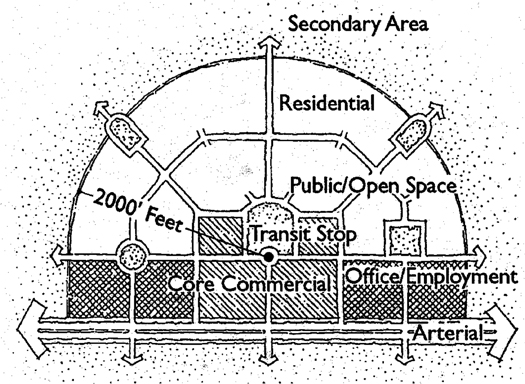
Current conception of a "good" transit oriented development. Source: placemakers.com
In this article, the focus was on TODs in New Jersey, close to Manhattan. Like Portland's TODs, development in this area is focused around a rail station. After analyzing these developments, a researcher named Daniel Chapman from the University of California-Berkeley found that "transit-oriented development did have a positive impact on several measures of car dependency." He found that, while car ownership was lower in these TODs, the predicting factor was amount of off-street parking instead of proximity to a rail station. The researcher also discovered that it was easier to predict those less likely to commute by car by using "off-street parking, job density, bus stop prevalence, and distance to Manhattan" as variables.
The assertion of the article, then, is that elements of TODs provide the benefits associated with them, but not proximity to a rail station as previously believed. This research may have implications here in Portland, because minimum parking regulations are currently based on proximity to transit stations. Jaffe says that while the results of this study may be jarring, it may actually bring hope to those concerned about the limited space available around rail stations. The need for less car-oriented development is present even where rail is not.
Sources

No comments:
Post a Comment
Note: Only a member of this blog may post a comment.